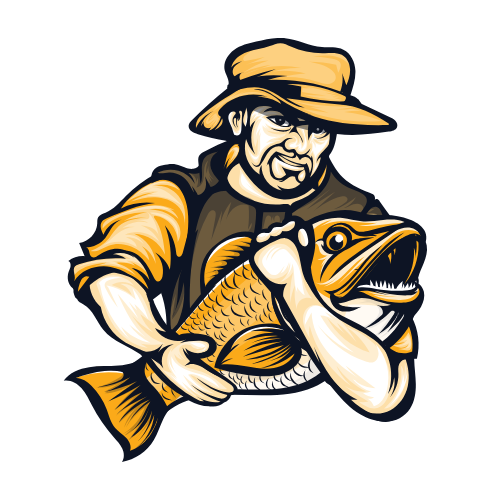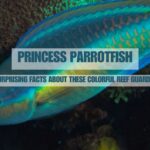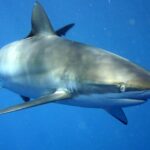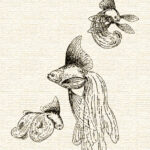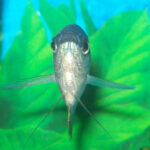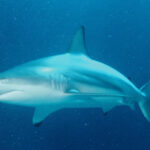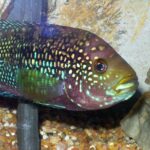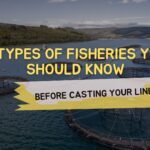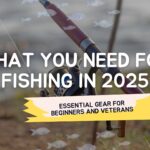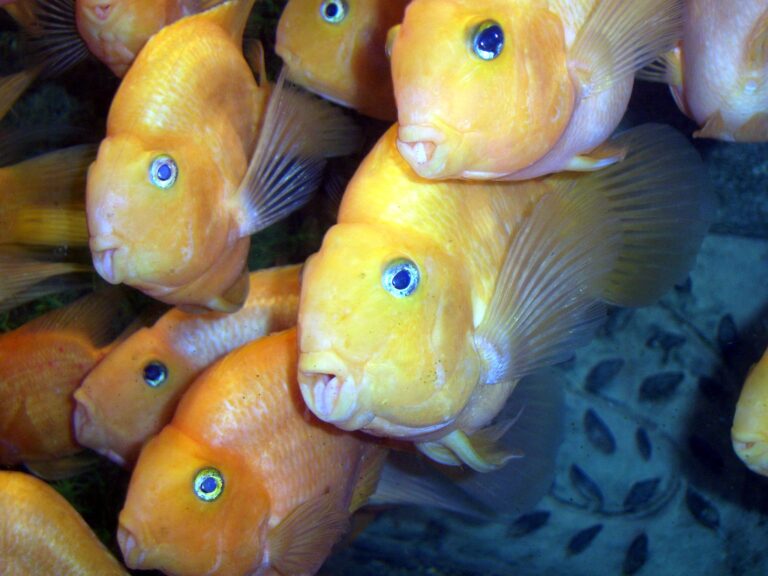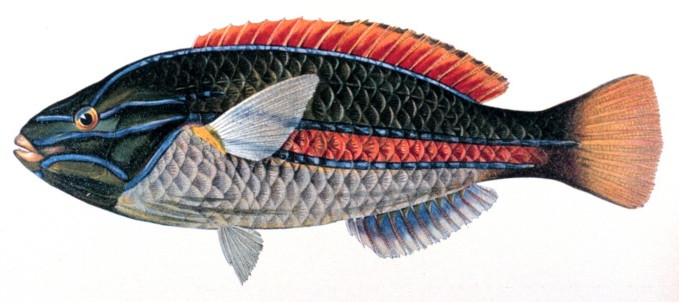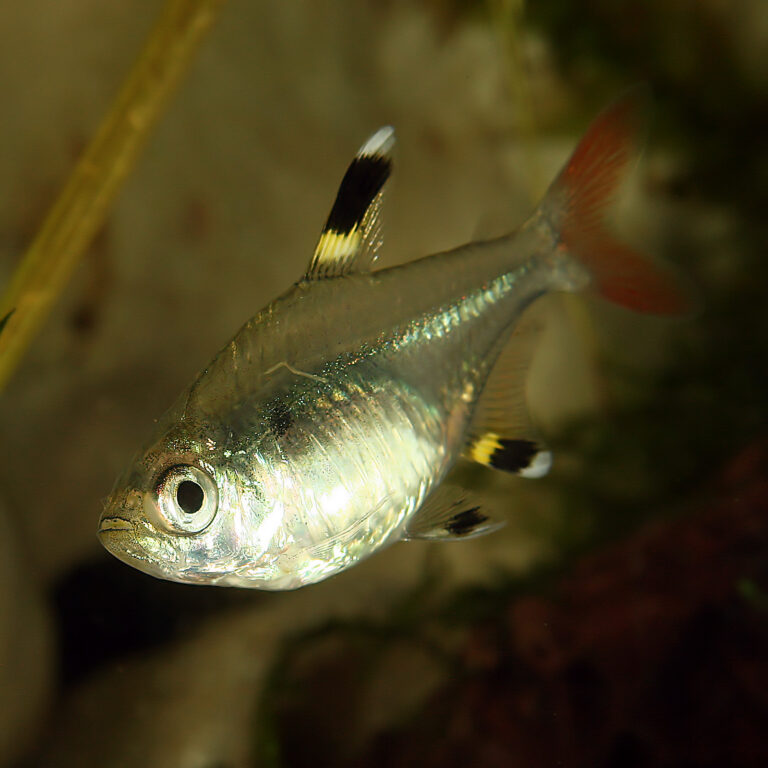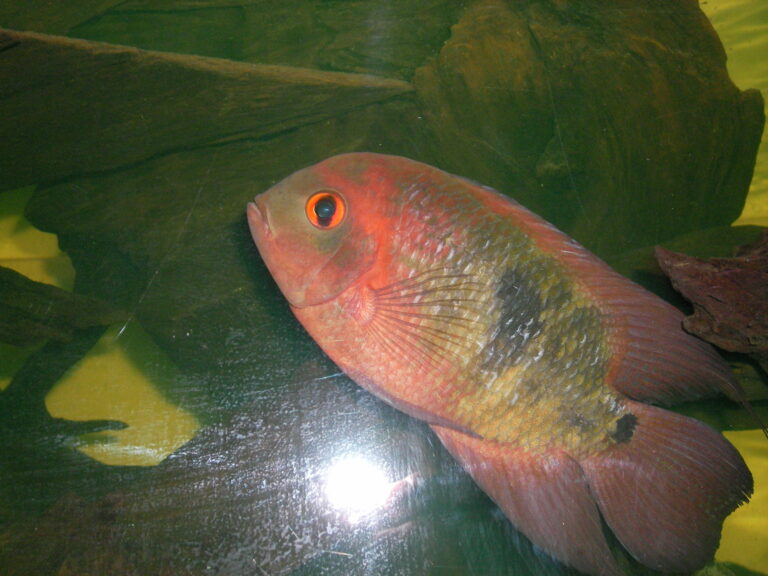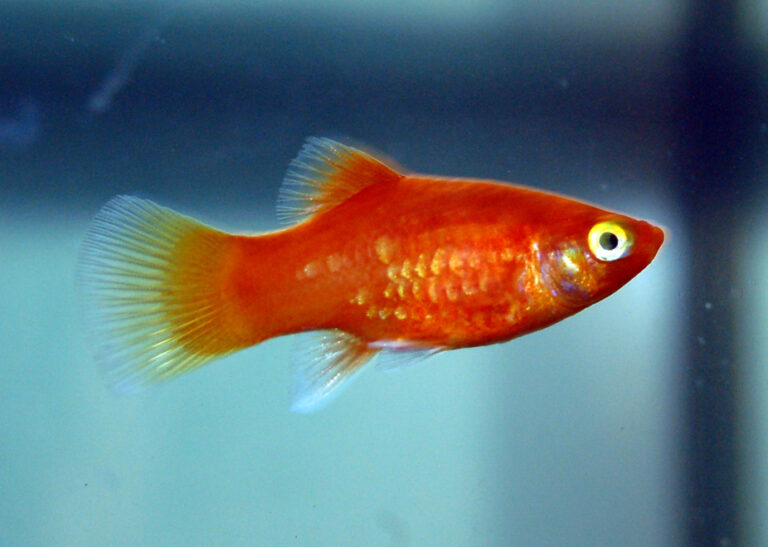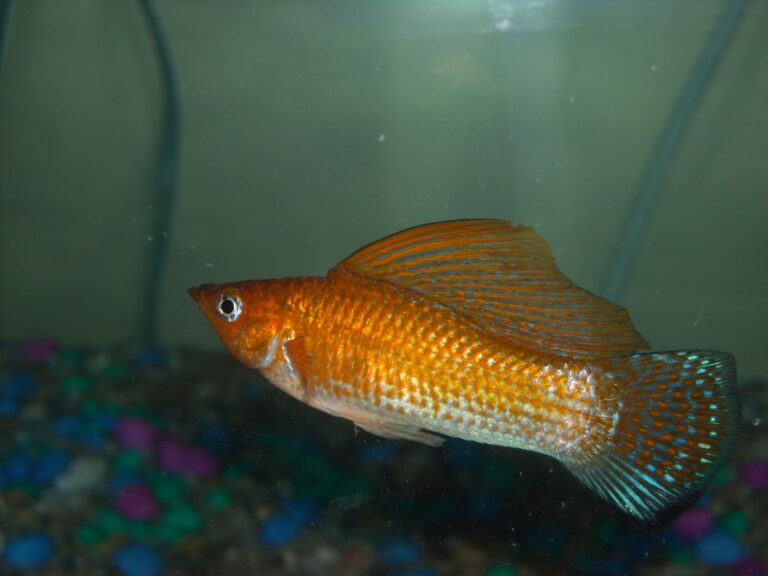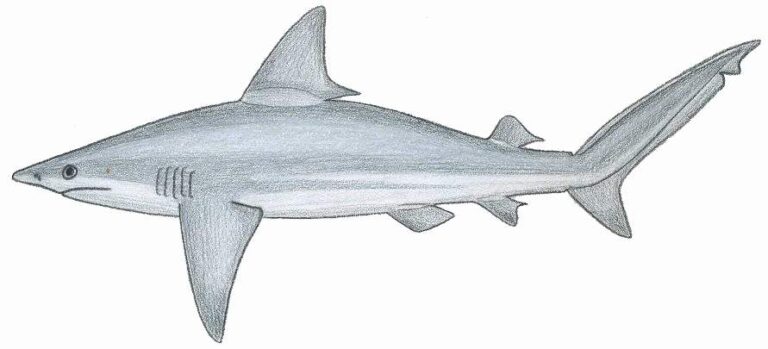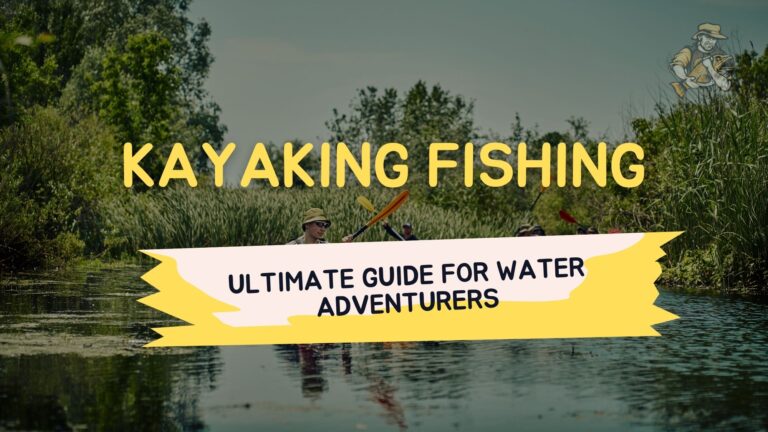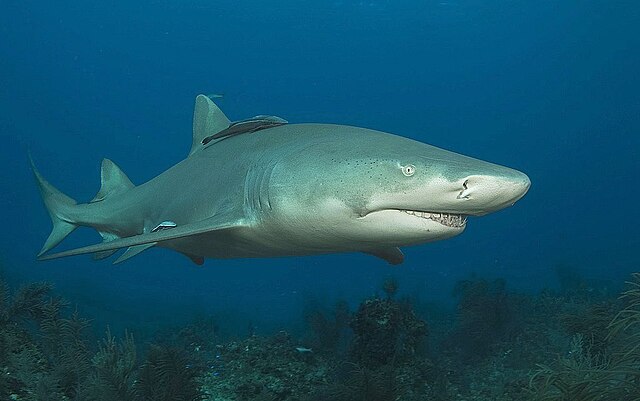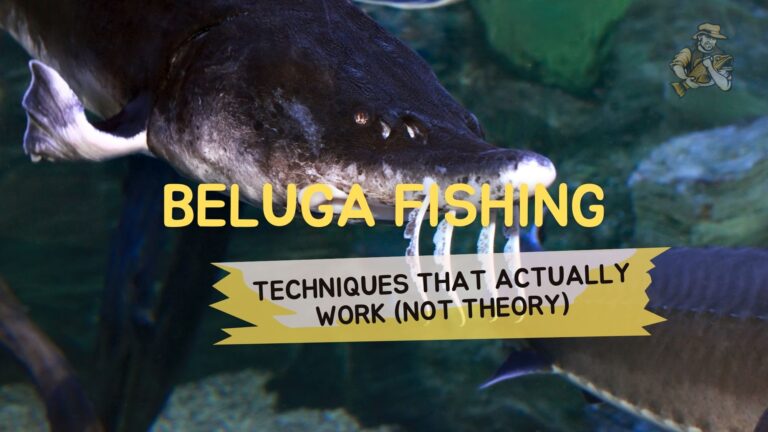Zebra Danio
By Ryan Maron | Last Modified: June 5, 2025
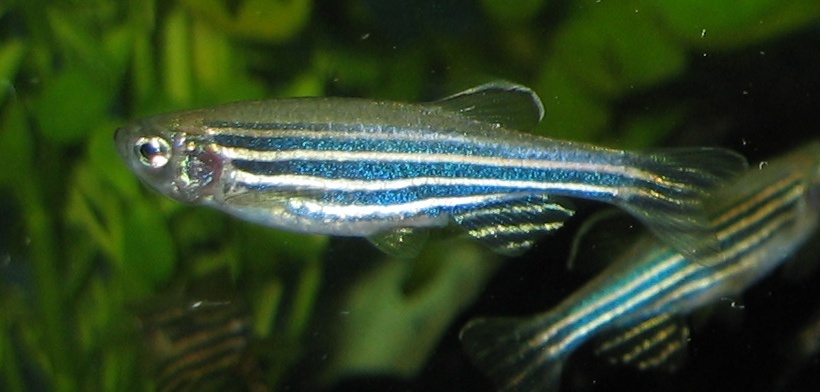
The Zebra Danio (Danio rerio) stands as one of freshwater aquarium keeping’s most recognizable and scientifically significant species. This small, hardy cyprinid exhibits distinctive horizontal stripes that give it its common name, while its scientific designation reflects its placement within the diverse Danio genus. Beyond its popularity in home aquariums, the Zebra Danio has achieved remarkable prominence as a model organism in developmental biology, genetics, and toxicology research, making it one of the most thoroughly studied fish species in the world.
Ecologically, the Zebra Danio functions as both predator and prey within its native South Asian freshwater ecosystems. These fish occupy a crucial niche as secondary consumers, feeding on small invertebrates and zooplankton while serving as an important food source for larger predatory fish. Their schooling behavior and rapid reproductive cycle contribute significantly to nutrient cycling and energy transfer within aquatic food webs. The species demonstrates remarkable adaptability to varying environmental conditions, a trait that has facilitated both its widespread distribution in nature and its success in captivity.
| Feature | Details |
|---|---|
| Common Name | Zebra Danio |
| Scientific Name | Danio rerio |
| Family | Cyprinidae |
| Typical Size | 4-6 cm (1.5-2.4 inches), 0.5-1 gram |
| Habitat | Shallow freshwater streams and rivers |
| Diet | Omnivorous – zooplankton, insects, plant matter |
| Distribution | South Asia – India, Bangladesh, Nepal, Myanmar |
| Conservation Status | Least Concern |
Taxonomy & Classification
The Zebra Danio belongs to the family Cyprinidae, commonly known as the carp and minnow family, which represents one of the largest families of freshwater fish worldwide. Within this extensive family, Danio rerio is classified under the subfamily Danioninae, alongside other small Asian cyprinids. The genus Danio encompasses approximately 27 recognized species, all characterized by their elongated bodies, terminal mouths, and distinctive color patterns.
First described by Francis Buchanan-Hamilton in 1822, the species was initially classified under various generic names before being definitively placed in the genus Danio. The specific epithet “rerio” derives from a Bengali word referring to the species’ local name in its native range. Recent phylogenetic studies have confirmed the monophyletic nature of the Danio genus, with molecular analyses revealing that D. rerio shares closest evolutionary relationships with other South Asian danio species.
The complete taxonomic classification places the Zebra Danio within the kingdom Animalia, phylum Chordata, class Actinopterygii, and order Cypriniformes. Modern genetic research has identified several laboratory strains and variants, including long-fin, leopard, and golden morphs, though these represent selective breeding variations rather than distinct taxonomic entities. The species’ genome has been fully sequenced, revealing approximately 26,000 protein-coding genes across 25 chromosomes, making it an invaluable model for comparative genomics studies.
Physical Description
The Zebra Danio exhibits a streamlined, fusiform body shape typical of active pelagic swimmers. Adult specimens typically reach 4 to 6 centimeters in total length, with females generally achieving slightly larger sizes than males. The species’ most distinctive feature consists of four to five horizontal stripes that extend from the operculum to the caudal fin base, alternating between deep blue-black and silver or gold coloration.
Body proportions reveal a laterally compressed form with a depth-to-length ratio of approximately 1:4. The head comprises roughly 25% of the total body length, featuring large, prominent eyes positioned laterally and a terminal mouth equipped with small, conical teeth arranged in pharyngeal rows. The dorsal fin contains 7 rays and originates at the body’s midpoint, while the anal fin possesses 12-14 rays. The caudal fin displays a distinctly forked shape with pointed lobes, facilitating rapid acceleration and maneuverability.
Sexual dimorphism becomes apparent in mature specimens, with females exhibiting fuller, more rounded abdomens and slightly larger overall size. Males display more intense coloration and develop more pointed anal and dorsal fins during breeding condition. The species’ lateral line system consists of 32-36 scales, each containing neuromast organs that detect water movement and pressure changes. Coloration intensity varies with environmental conditions, stress levels, and reproductive status, with dominant individuals often displaying more vibrant striping patterns.
Habitat & Distribution
The Zebra Danio’s native distribution encompasses the freshwater river systems of South Asia, primarily within the Ganges and Brahmaputra river basins. Wild populations inhabit areas across northeastern India, Bangladesh, Nepal, and Myanmar, with the species showing particular abundance in West Bengal and Assam regions. These fish occupy shallow, slow-moving waters including streams, ditches, rice paddies, and river margins where water depths typically range from 0.3 to 1.5 meters.
Natural habitat conditions reflect the monsoon-influenced climate of the region, with water temperatures fluctuating between 18-25°C annually and pH levels ranging from 6.0 to 8.0. During the dry season, Zebra Danios concentrate in deeper pools and canal systems, while monsoon flooding allows them to disperse into temporarily flooded grasslands and agricultural areas. These seasonal migrations facilitate feeding opportunities and reproductive activities, with spawning often coinciding with the onset of monsoon rains.
Substrate composition in native habitats varies from rocky bottoms in hill streams to muddy sediments in lowland areas. Vegetation density ranges from sparse in fast-flowing sections to dense stands of aquatic plants in quieter backwaters. Water quality parameters typically include dissolved oxygen levels of 6-8 mg/L and moderate hardness levels of 5-15 dGH. The species demonstrates remarkable tolerance for environmental fluctuations, surviving in waters with conductivity levels ranging from 50 to 1,500 microsiemens per centimeter. This adaptability has contributed to successful establishment of introduced populations in various countries, though such introductions remain limited compared to other aquarium species.
Diet & Feeding Behavior
Zebra Danios exhibit omnivorous feeding behavior, consuming a diverse array of food items that reflect their opportunistic nature. In natural environments, their diet consists primarily of small invertebrates including chironomid larvae, copepods, cladocerans, and various insect larvae. Seasonal availability influences food choice significantly, with zooplankton forming the bulk of their diet during monsoon periods when plankton density increases dramatically.
Feeding activity patterns demonstrate distinct diurnal preferences, with peak foraging occurring during early morning and late afternoon hours. The species employs both planktivorous and benthivorous feeding strategies, actively pursuing prey in the water column while also sifting through substrate for buried invertebrates. Their terminal mouth position and pharyngeal teeth arrangement prove highly effective for capturing and processing small prey items.
Plant matter constitutes approximately 15-20% of the natural diet, including algae, small seeds, and decomposing organic material. During periods of low invertebrate availability, particularly in the dry season, plant material consumption increases substantially. Feeding behavior in schools involves complex social dynamics, with dominant individuals often claiming preferred feeding areas while subordinate fish feed at the periphery.
Laboratory studies have revealed sophisticated prey detection capabilities, with Zebra Danios responding to visual, chemical, and mechanical stimuli when locating food sources. Their feeding efficiency correlates directly with water temperature, prey density, and social group size. These adaptable feeding strategies have proven crucial for the species’ success in diverse aquatic environments and contribute to their effectiveness as biological control agents for mosquito larvae in some regions.
Behavior & Adaptations
The Zebra Danio’s social structure centers around schooling behavior, with groups typically numbering 10-30 individuals in natural settings. School formation provides multiple survival advantages including enhanced predator detection, improved foraging efficiency, and reduced individual energy expenditure through hydrodynamic benefits. Within schools, individuals maintain specific positioning based on size, age, and social hierarchy, with larger, more dominant fish occupying central positions.
Swimming patterns reveal remarkable coordination, with school members responding to directional changes within milliseconds through lateral line system detection. This rapid response capability allows entire schools to evade predators as a cohesive unit. Individual fish can reach burst speeds of up to 10 body lengths per second when threatened, while sustained swimming speeds average 2-3 body lengths per second during normal activity.
Territorial behavior emerges primarily during reproductive periods, when males establish and defend spawning sites. Aggression displays include fin spreading, lateral displays, and brief chasing behaviors, though serious injuries rarely result from these interactions. The species demonstrates remarkable environmental plasticity, adjusting behavior patterns based on factors such as water temperature, dissolved oxygen levels, and population density.
Circadian rhythms strongly influence activity patterns, with the species showing peak activity during dawn and dusk periods. Night-time behavior involves reduced movement and gathering in protected areas such as dense vegetation or structural refugia. Stress responses include color changes, altered swimming patterns, and modified social interactions. These behavioral adaptations have contributed significantly to the Zebra Danio’s success as both a wild species and laboratory model organism, demonstrating their ability to thrive under diverse environmental conditions.
Reproduction & Life Cycle
Zebra Danio reproduction follows a seasonal pattern closely tied to monsoon cycles in their native range. Spawning typically occurs during the warmer months from April through September, with peak reproductive activity coinciding with the onset of heavy rains when water temperatures reach 22-26°C. Sexual maturity is achieved at approximately 3-4 months of age when fish reach 2.5-3.0 centimeters in length.
The spawning process involves elaborate courtship behaviors initiated by males who establish territories among aquatic vegetation or substrate depressions. Courtship displays include vigorous chasing, lateral displays, and color intensification. Receptive females respond by approaching spawning sites where males perform circular swimming patterns while maintaining close proximity to the female’s ventral region.
Egg deposition occurs in multiple spawning events, with females releasing 100-300 eggs per session over a period of several days. Fertilization takes place externally as males release sperm simultaneously with egg deposition. The adhesive eggs attach to vegetation, substrate, or remain scattered across the spawning area. Embryonic development proceeds rapidly at optimal temperatures, with hatching occurring within 48-72 hours.
Larval stages progress through several developmental phases, beginning with a yolk-sac stage lasting 3-5 days before transitioning to active feeding. Juvenile fish initially consume microscopic organisms including rotifers and small crustaceans before graduating to larger prey items. Growth rates average 0.5-1.0 millimeters per week under favorable conditions. The complete life cycle from egg to reproductive adult spans approximately 12-14 weeks, though this timeframe varies significantly based on environmental conditions. This rapid reproductive cycle contributes to the species’ resilience and population stability, similar to reproductive strategies observed in various tetra species that share similar ecological niches.
Predators & Threats
Zebra Danios face predation pressure from numerous species throughout their life stages, with vulnerability varying significantly based on size, habitat, and environmental conditions. Adult fish fall prey to larger cyprinids, catfish species, and piscivorous birds including kingfishers and herons. Juvenile and larval stages experience higher predation rates from invertebrate predators such as dragonfly nymphs, diving beetles, and aquatic bugs.
Seasonal flooding patterns influence predator-prey dynamics considerably, as higher water levels provide expanded habitat and refuge opportunities while simultaneously introducing new predator species from connected waterways. During dry seasons when fish concentrate in reduced water bodies, predation pressure intensifies due to increased predator-prey encounter rates.
Anthropogenic threats have emerged as significant challenges for wild Zebra Danio populations. Agricultural runoff containing pesticides and fertilizers has led to water quality degradation in many native habitats. Rice cultivation practices, while providing seasonal habitat, also introduce chemical contaminants that can affect reproduction and survival rates. Urban development and dam construction have fragmented many river systems, limiting population connectivity and genetic exchange.
Habitat modification represents perhaps the most significant long-term threat, as wetland drainage and stream channelization reduce available spawning and nursery areas. Water extraction for irrigation and industrial purposes has lowered water levels in many systems, concentrating pollutants and increasing temperature fluctuations. Competition from introduced species poses an emerging threat in some regions, though the Zebra Danio’s adaptability has generally allowed coexistence with non-native species.
Climate change effects, including altered precipitation patterns and increased temperature extremes, may impact future population dynamics. However, the species’ demonstrated resilience and broad environmental tolerance suggest continued persistence in most of its native range. Conservation efforts focusing on watershed protection and water quality maintenance will prove crucial for maintaining healthy wild populations.
Conservation Status
The International Union for Conservation of Nature (IUCN) currently classifies the Zebra Danio as Least Concern, reflecting the species’ widespread distribution, stable population trends, and adaptive capabilities. This designation acknowledges that while localized population declines may occur due to habitat degradation, the species faces no immediate risk of extinction across its native range.
Population assessments indicate that Zebra Danios remain common throughout most of their historical distribution, with particularly robust populations in protected areas and less disturbed watershed systems. The species’ reproductive strategy, featuring high fecundity and rapid generation times, provides substantial resilience against environmental perturbations and population bottlenecks.
Regional conservation efforts have focused primarily on broader freshwater habitat protection rather than species-specific measures. Programs aimed at maintaining water quality in major river systems indirectly benefit Zebra Danio populations along with numerous other freshwater species. Wetland preservation initiatives in Bangladesh and northeastern India provide crucial spawning and nursery habitat protection.
The extensive use of Zebra Danios in scientific research has generated substantial knowledge about their biology, genetics, and environmental requirements. This research foundation supports informed conservation decisions and provides baseline data for monitoring population changes. Laboratory breeding programs maintain genetic diversity through careful strain management, ensuring continued availability for research while reducing pressure on wild populations.
International trade regulations under CITES do not currently apply to Zebra Danios due to their stable conservation status and successful captive breeding programs. However, monitoring of trade volumes and source populations continues to ensure sustainable harvesting practices. The species’ conservation outlook remains positive, supported by their adaptability, wide distribution, and the indirect benefits of broader freshwater conservation initiatives.
Human Interaction
The relationship between humans and Zebra Danios spans multiple dimensions, from traditional fishing practices in their native range to modern scientific research applications. In South Asian communities, these fish have historically served as a minor food source, particularly during monsoon seasons when they become more abundant and accessible in flooded agricultural areas. Local fishing methods typically employ fine-meshed nets and traditional traps designed to capture small cyprinids.
The aquarium trade represents the most significant commercial interaction with the species, with millions of Zebra Danios produced annually through captive breeding operations. Their hardy nature, attractive appearance, and peaceful temperament have made them among the most popular freshwater aquarium fish worldwide. Commercial breeding facilities primarily located in Southeast Asia supply global markets, with quality strains commanding premium prices among hobbyists.
Scientific research applications have elevated the Zebra Danio to international prominence as a model organism. Developmental biologists utilize the species extensively due to their rapid development, transparent embryos, and genetic tractability. Research applications include studies of vertebrate development, genetics, toxicology, and disease modeling. The complete genome sequencing project has facilitated advanced genetic research, while transgenic strains serve specialized research purposes.
Educational institutions worldwide maintain Zebra Danio colonies for undergraduate and graduate research training. Their ease of maintenance and well-characterized biology make them ideal for teaching fundamental principles of fish biology, behavior, and experimental design. Many research institutions have established dedicated zebrafish facilities with sophisticated water quality monitoring and genetic strain management protocols.
Biotechnology applications continue expanding, with Zebra Danios serving as test subjects for pharmaceutical development, environmental toxicology studies, and genetic engineering research. These applications demonstrate the species’ broader value beyond traditional aquarium keeping, similar to how Betta fish varieties have found diverse applications in research and breeding programs.
Interesting Facts
The Zebra Danio holds the distinction of being the first vertebrate species to be cloned successfully, achieved in 1981 through nuclear transfer techniques that predated similar accomplishments in mammals. This groundbreaking research established the foundation for subsequent advances in vertebrate cloning technology and developmental biology research.
Remarkably, Zebra Danios have demonstrated the ability to regenerate lost fins, scales, and even portions of their heart tissue. This regenerative capacity has made them invaluable for studies investigating tissue repair mechanisms and potential therapeutic applications for human medicine. Research has shown that adult Zebra Danios can regenerate up to 20% of their heart muscle following injury, a capability that far exceeds that of most vertebrate species.
The species exhibits an unusual sleep behavior pattern, with individuals entering a state resembling sleep while maintaining an upright swimming position near the water surface. During these rest periods, brain activity decreases significantly, and fish show reduced responsiveness to external stimuli, though they remain capable of rapid arousal when threatened.
Zebra Danios possess remarkable temperature tolerance, surviving in water temperatures ranging from 6°C to 38°C, though reproduction requires more narrow temperature ranges. This thermal adaptability has contributed to their success in laboratory settings and their potential for establishment in non-native environments.
The species demonstrates sophisticated learning capabilities, including the ability to navigate complex mazes, recognize individual conspecifics, and modify behavior based on previous experiences. Laboratory studies have documented memory retention periods extending beyond several weeks, indicating cognitive abilities that rival those of much larger fish species.
Space research has included Zebra Danios as test subjects, with specimens traveling aboard space missions to investigate the effects of microgravity on vertebrate development and behavior. These studies have provided insights into gravitational influences on bone development, muscle formation, and spatial orientation in vertebrates.
Frequently Asked Questions
How long do Zebra Danios typically live in captivity?
Zebra Danios generally live 3-5 years in well-maintained aquarium conditions, though exceptional specimens may reach 7-8 years. Lifespan depends heavily on water quality, diet, temperature stability, and genetic factors. Laboratory strains often show reduced longevity compared to wild-type fish due to inbreeding effects and artificial selection pressures.
What water conditions do Zebra Danios require for optimal health?
Optimal conditions include temperatures between 20-26°C, pH levels of 6.5-7.5, and moderate water hardness of 5-15 dGH. They require well-oxygenated water with dissolved oxygen levels above 5 mg/L and benefit from gentle water movement. Regular water changes of 20-25% weekly help maintain stable water chemistry and remove accumulated metabolic waste products.
Can Zebra Danios be kept with other fish species?
Zebra Danios are generally peaceful community fish compatible with similarly-sized species including tetras, rasboras, small barbs, and bottom-dwelling catfish. They should not be housed with aggressive species or fish large enough to consider them prey. Their active swimming behavior may stress slower, more sedate species, making careful species selection important for community tanks.
How can you distinguish between male and female Zebra Danios?
Sexual dimorphism becomes apparent in mature fish, with females displaying fuller, more rounded body shapes, particularly visible from above. Males remain more slender and develop more intense coloration during breeding periods. Adult females typically grow slightly larger than males, and experienced aquarists can identify subtle differences in fin shape and behavioral patterns between the sexes.
Conclusion
The Zebra Danio represents a remarkable example of freshwater fish adaptability and resilience, maintaining stable populations throughout its native South Asian range while achieving global significance as both an aquarium species and scientific model organism. Its dual role as an ecologically important native species and invaluable research tool demonstrates the multifaceted value of biodiversity conservation. Understanding the complex biology and ecological requirements of species like the Zebra Danio remains essential for both maintaining healthy aquatic ecosystems and advancing scientific knowledge that benefits broader conservation efforts.
Share The Article:
More Fish Species:
-
Blood Parrot Cichlid
The Blood Parrot Cichlid stands as one of the most distinctive and controversial specimens in contemporary aquarium culture. This…
-
Rainbowfish
Rainbowfish represent one of the most visually striking and ecologically significant groups of freshwater fish found across Australia, New…
-
Pristella Tetra
The Pristella Tetra (Pristella maxillaris) stands as one of South America’s most distinctive freshwater aquarium species, renowned for its…
-
Chocolate Cichlid
The Chocolate Cichlid stands as one of South America’s most distinctive freshwater species, captivating aquarists and researchers alike with…
-
Coral Platy
The Coral Platy (Xiphophorus maculatus) represents one of the most recognizable and beloved freshwater aquarium fish in the world….
-
Silver Molly
The Silver Molly (*Poecilia sphenops*) stands as one of the most recognizable and adaptable freshwater fish species in both…
Discover
-
Sandbar Shark
The Sandbar Shark (Carcharhinus plumbeus) stands as one of the most recognizable and ecologically significant members of the requiem…
-
Oceanic Whitetip Shark
The Oceanic Whitetip Shark (*Carcharhinus longimanus*) stands as one of the ocean’s most formidable and recognizable apex predators, distinguished…
-
Kayaking Fishing: Ultimate Guide for Water Adventurers
There’s something magical about gliding across the water in a kayak with a fishing rod in hand. The stealthy…
-
Lemon Shark
The Lemon Shark (*Negaprion brevirostris*) represents one of the most scientifically studied and ecologically significant predators in coastal marine…
-
Best Fishing Spots in Florida: Top Locations for 2025
Florida’s nickname as the “Fishing Capital of the World” isn’t just clever marketing. With over 7,700 lakes, 10,550 miles…
-
Beluga Fishing: Techniques That Actually Work (Not Theory)
When it comes to beluga fishing, there’s a world of difference between what you read in theory and what…
Discover
-
Crown Tail Betta
The Crown Tail Betta stands as one of aquaculture’s most distinctive ornamental fish, renowned for its dramatically elongated, spiky…
-
Kribensis Cichlid
The Kribensis Cichlid (Pelvicachromis pulcher) stands as one of West Africa’s most remarkable freshwater fish species, captivating aquarists and…
-
Best Fishing Reels for Any Budget: Complete Guide 2025
When it comes to finding the best fishing reels, quality doesn’t always mean emptying your wallet. After testing hundreds…
-
Lyretail Molly
The Lyretail Molly (*Poecilia latipinna*) stands as one of the most recognizable and ecologically significant freshwater fish species in…
-
Louisiana Redfish Fishing: Best Spots & Tactics for Beginners
Finding that first bull red is a moment you never forget. The pull, the power – it’s something special….
-
King Mackerel Fishing: Top Strategies for Landing Smokers
Some days on the water just stick with you. Few things compare to that first time a king mackerel…
